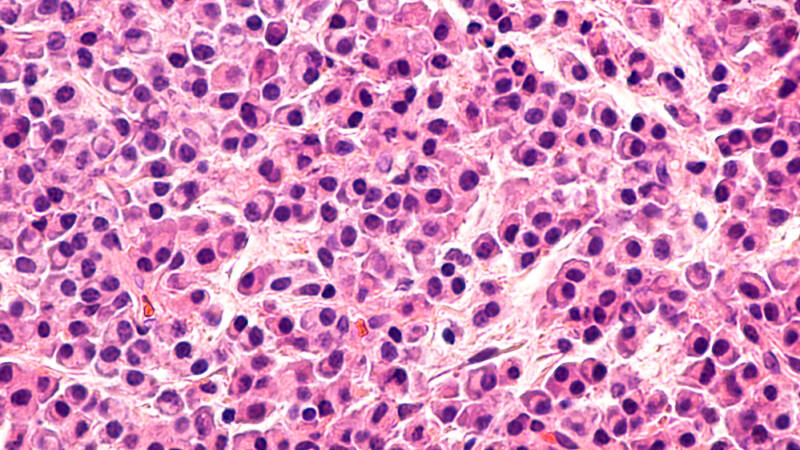Multiple Myeloma: Early Signs and Treatments

Multiple myeloma is a relatively rare form of cancer, affecting about 1 in every 132 people. Despite it being a comparatively uncommon cancer, the American Cancer Society predicts that 32,270 new diagnoses of the disease will be made this year in the United States. In 2020, multiple myeloma is expected to claim in excess of 12,000 lives around the country.
The Basics of Multiple Myeloma
Multiple myeloma (sometimes referred to simply as ‘myeloma’) is a cancer of the white blood cells. These plasma cells – which are formed in bone marrow – are responsible for making the antibodies which guard the body against infection. When multiple myeloma occurs in the bone marrow as the result of abnormal plasma, it causes the cells to build up and crowd out other essential blood cells, such as platelets, red blood cells, and healthy white blood cells.
Causes and Risk Factors
Compared to other cancers, very little is understood about the causes and risk factors associated with multiple myeloma. Statistics show that men are more at risk of developing the disease than women, and that black people are more than twice as likely to be diagnosed than white or Asian people. We also know that the disease is considerably more common in older adults, rarely occurring in people under 45 years old.
Some theorized causes of multiple myeloma are:
- Exposure to harmful industrial chemicals
- Exposure to high doses of radiation
- Exposure to certain viruses
It is now understood that all people who develop myeloma have had a condition called ‘monoclonal gammopathy of undetermined significance’ (MGUS) beforehand. People who have MGUS form a particular type of abnormal protein in their bone marrow. While the condition is certainly linked to multiple myeloma, only a small percentage of people who have MGUS will go on to develop the cancer.
Warning Signs and Symptoms
In its earliest stages, multiple myeloma often does not have any symptoms. When the disease has progressed to the point where normal bone marrow function is impeded, patients may experience:
- Brittle bones
- Frequent infections
- Excessive bruising or bleeding
- Limb weakness
- Bone pain
- Trouble breathing
- Extreme tiredness
Complications
As multiple myeloma effects the body’s ability to produce healthy blood, it can lead to serious systemic health complications, which may include:
- Anemia
- Bleeding disorders
- Reduced kidney function or kidney failure
- Bone fractures
- Hypercalcemia
- Neurological complications
Treatment
The treatment options for multiple myeloma vary quite considerably based on whether the disease has advanced to a point where the patient is experiencing symptoms. Early stage myeloma patients may simply be advised to have regular check-ups to monitor the progression of the disease. If evidence of bone thinning is detected, doctors may intervene with one of the following treatments:
- Targeted therapy – Drug therapy that targets specific components of the cancerous cells
- Biological therapy – Medications that support the body’s immune system to suppress cancer growth
- Chemotherapy – To kill cancerous cells. Extremely high doses of chemotherapy are used before bone marrow transplants
- Bone marrow transplant – Healthy bone marrow is taken from a suitable donor and implanted in the myeloma patient’s bones
There is a great deal of evidence to suggest that early intervention can dramatically increase quality of life and life span in myeloma patients. If you are experiencing any of the above-mentioned symptoms, please consult your doctor immediately.